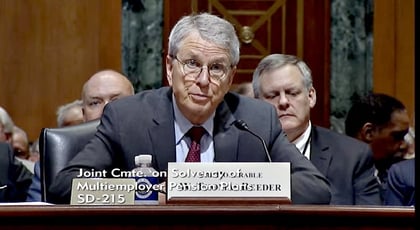The Pension Benefit Guaranty Corp. (PBGC) still has the assets to make good on benefits guarantees when multiemployer pension plans fail today, but the guarantees are awful.
W. Thomas Reeder, the PBGC director, warned members of Congress about the weak level of multiemployer plan guarantees Thursday, at a hearing organized by the new Joint Select Committee on Solvency of Multiemployer Pension Plans.
(Related: Meet Your Multiemployer Pension Nightmare: Actuary to Lawmakers)
Congress set up the committee to look into strategies for shoring up the multiemployer plan program, which is on track to run out of stored up assets, and to have to rely on current employer contributions to make benefits payments, sometime in the 2020s.
Why This Matters to Financial Professionals
Fewer life and annuity agents now sell new group annuities or other products or services to multiemployer plan clients. But some still service plans sold to labor organizations years ago.
Even financial professionals who have never had any connection with pension plan sales may find that many of their individual clients have been including streams of benefits from multiemployer plans in their retirement income planning arrangements.
Some affluent and mass affluent business owner clients have businesses with revenue that depends heavily on sales to retired police officers, retired teachers, and other retirees who are living off of multiemployer pension plan benefits.
The Testimony
Reeder told the lawmakers at the hearing that the PBGC multiemployer plan program has always had looser funding rules than the single-employer plan program, which is now solvent. Early on, the rules were different pension experts thought that multiemployer plans would be more diversified and more stable than single-payer plans.
The benefits guarantee levels for the multiemployer plan participants are also much lower than the guarantees for single-employer plan participants, Reeder said.
“The multiemployer guarantee has not increased since 2001 and is not indexed for inflation,” Reeder said.
The maximum guaranteed benefit today for a participant in a single-employer plan is $65,045 per year.
For a participant with 30 years of service in multiemployer plan, the maximum guaranteed annual benefit is just $12,870.









 May 18, 2018 at 01:14 PM
May 18, 2018 at 01:14 PM











